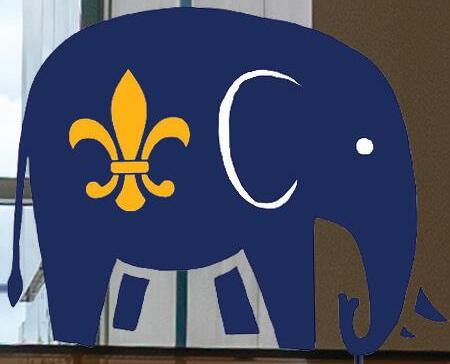

THE TRINITY VOICE

From the house system to faculty

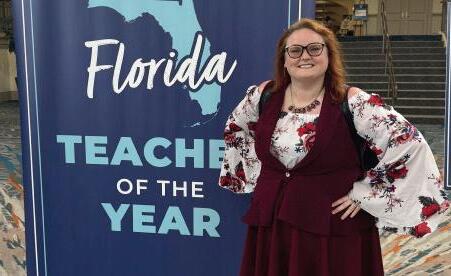
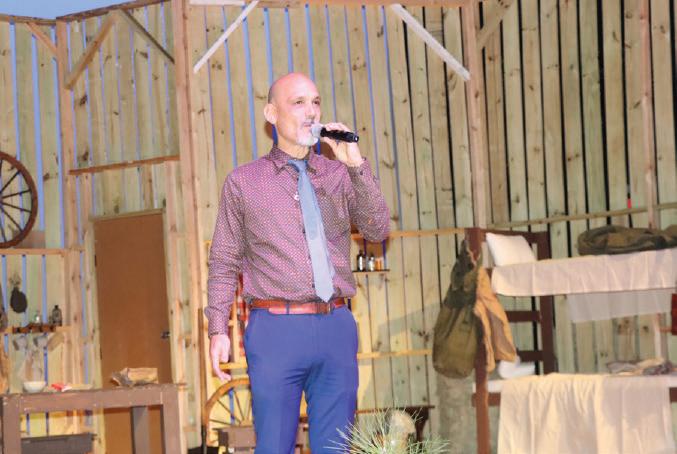




6


New STEM Building
The Nochur Sankar Science Center will o er a unique learning experience.
9 Interim
Term
Honeybee Troubles
Declining honeybee population impacts the globe.
















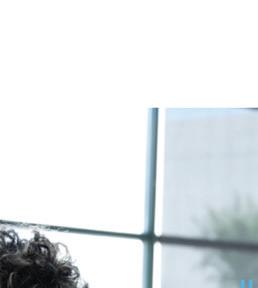
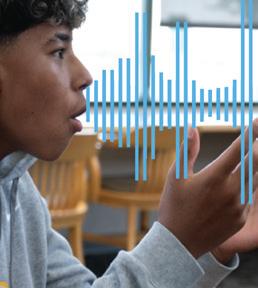





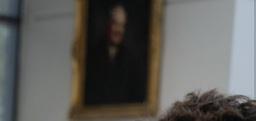
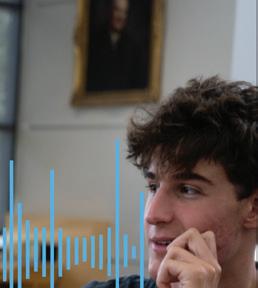








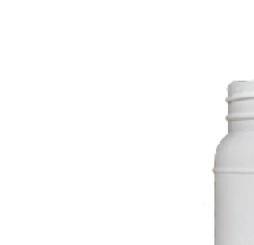

14 18 Back to










Falling for Fall
Annual fall trends influence food, media and fashion.
Interim Term launch opens new opportunities for upper school. 26
School Buzz
Daily school noises di er between sixth graders and seniors. 25 Whoop, There It Is!
Fitness wearables a ect how athletes take care of their health.
Media
STAFF
Editors-in-Chief: Lucy Chong, Fay Zhao
Non-Print
Editors-in-Chief: Jack Aaron, Nikhil Daniel
Managing Editors: Ashwin Anand, Emily Lopez, Sammy Lou, Gustavo Membreno
Layout Editors: Aarav Gupta, Sofia Haddadin
Copy Editors: Sami Haddadin, Taylor Gri th
Broadcast & Podcast Department: Olivia Agnew (Editor), Brayden Kells, Britt Voll
Social Media and Online Department: Olivia Agnew (Editor), Gabbie Williams
News Department: Mia Prince (Editor), Krish Gupta, Sami Haddadin, Janav Ramprakash, Victoria Suarez
Opinions Department: Karl Loiseau (Editor), Gabbie Williams
Focus Department: Lila Choudry (Editor), Taylor Gri th, Skyler Campbell
Lifestyles Department: Mila Taylor (Editor), Julia Wu, Jena Mhamdi
Sports Department: Ben Kleiman (Editor), Thomas Bonos, Neve Judelson
STEM Department: Ashwin Anand (Editor), Sarah Zobel, Omi Tikalal
Graphics Department: Maxi de la Fuente (Editor), Natalie Baron, Aylin Garibay
Photo Department: Julia Hoskins (Editor), Eden Kiger, James Ellzey, Lola Brown, Ally Williams
Business Manager: Krish Gupta
Advisers: Erin Miller & Brian Kells
Editorial Policy
e Trinity Voice is a member of the Florida Scholastic Press Association and the National Scholastic Press Association. e Trinity Voice is produced by the newspaper/journalism class at Trinity Preparatory School of Florida. Editorials represent the opinion of e Trinity Voice writer and are not necessarily the views of the administration, faculty, or Board of Trustees of Trinity. e Voice welcomes letters to the editor and free-lance articles or photography. All submissions become the property of e Voice. Please send all correspondence to 5700 Trinity Prep Lane, FL 32792. e Voice may also be contacted via phone at 407-671-4140 and via e-mail at voice@ trinityprep.org. For information regarding the purchase of advertising within e Voice, contact us by one of the methods mentioned above. e Voice is a monthly publication during the school year (with the exceptions of November and January).
Broadcast & Social Media
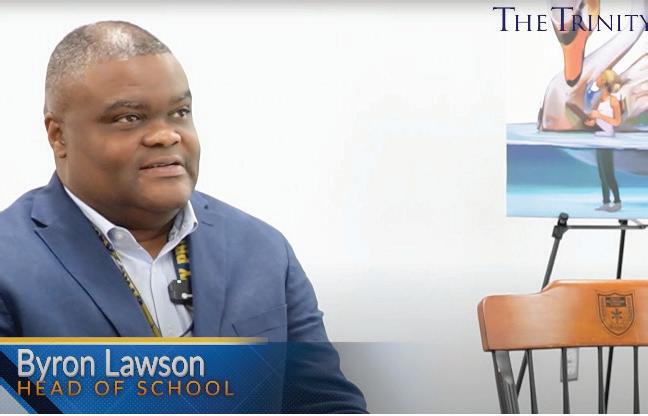
The 2O25-2O26 school year marks Head of School Byron Lawson’s 1Oth year at Trinity Prep. Listen in as Jack Aaron ‘26 asks Lawson a series of questions related to some of the big changes in store for the school’s future.
Tune into this month’s edition of Pardon the Interruption with Nikhil Daniel and Britt Voll as they discuss topics varying from the Little League World Series, college football and even Trinity Prep Football.
Podcasts


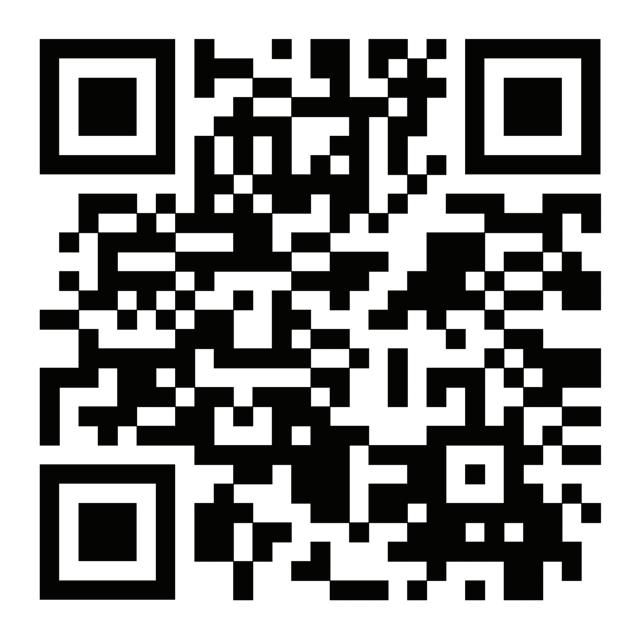





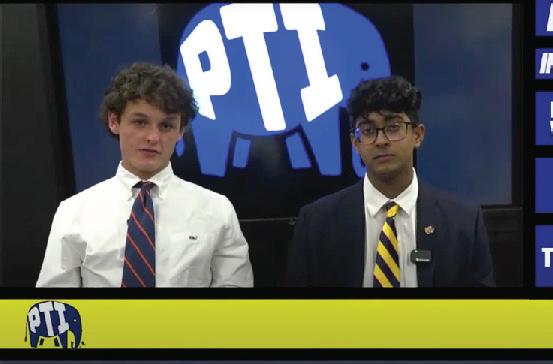

Listen in to editor-in-chief Fay Zhao as she interviews mathematics teacher Shannon Bergman on her upcoming interim course: Crocheting for a Cause. The class covers the basics of crocheting as well as opportunities to uplift our community through service.
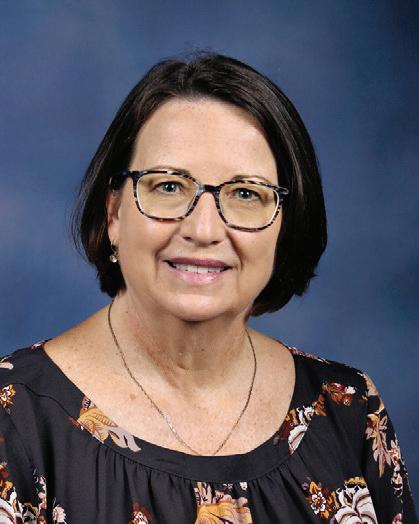




THRONE ON CAMPUS
Katrina Brominguez takes forensics team in a new direction
Article by Omi Tikalal
Photos courtesy of Katrina Brominguez
When the new director of forensics, Katrina Brominguez, walks into a classroom, she does not see rows of desks. She sees a kingdom.
“Teaching is kind of like ruling your own kingdom,” Brominguez said. “I have to get results, but how I get those results is entirely up to me. That kind of control is fantastic.”
Her reign, however, is not about power; it is about words. Growing up, watching her father teach history classes began to foster her desire to teach others. She fell in love with communication, which led her to study English and get a minor in feminist studies during college.
“I’ve always loved teaching,” Brominguez said. “Frankly, I like being able to talk constantly and force people to listen.”
For nearly 20 years, Brominguez has lived and breathed speech and debate, first as a competitor and now as a coach.
“My love of words and belief that communication is the basis of human society (drew me to debate),” Brominguez said. “The amazing thing is that there’s not one event, there’s

many, so it activates all parts of my brain.”
That passion carried her through teaching English, journalism, yearbook and debate. At Brominguez’s previous school, Fort Walton Beach High School, Brominguez won Teacher of the Year for the Okaloosa County District.
“I won Teacher of the Year because of my English teaching, not debate, and I’ve always felt grateful for that recognition,” Brominguez said.
What Brominguez is most proud of are the programs she has built that take public speaking beyond the competition. Her students debated current events with nursing home residents, led assemblies on fentanyl and mentored elementary school kids with speech games.
As she prepares to lead Trinity’s forensics team, Brominguez wants her students to see the bigger picture.
“You do not become a lawyer purely because of the money — I mean the money is nice — but you become a lawyer to help people,” Brominguez said. “That moral backbone is important, and your school really focuses on that.”
Outside the classroom, Brominguez still loves a good contest. She met her husband through online video games, and the pair now channels their competitive spirit into both board games and video games.
“I’m obsessed with Catan right now,” she said. “And my Monopoly set is wooden, carved and engraved with my name. We’re very extra, but it’s fabulous.”
The couple celebrated their wedding in Bali, Indonesia, with a video game background.
“I have a picture of me in my wedding gown with my husband and a video game on the screen,” Brominguez said. “It’s very us.”
Her competitive streak carries over to her free time. Brominguez jokes that if she has not made a nemesis by the end of a board game, she has not played it correctly.
“In debate, the rule is always blood in the water, no bodies on the floor,” Brominguez

said. “I feel the same way about Monopoly: fight me.”
Now at Trinity, Brominguez is eager to expand the middle school debate program, build stronger ties with the theater department, and continue to push her students as competitors and as people.
“I’ve been talking to the new theater teacher, and I would love to really connect with him and his kids,” Brominguez said. “Theater and debate are like cousins, and I think it would be really cool to bring them together.”
With her sharp wit, big ambitions and board game enthusiasm, the new director of forensics is ready to lead and teach students to think beyond trophies and tournaments.
“If all that matters is winning, then you have not taught good people; you raised selfish ones,” Brominguez said. “It has to be about more than competition. It’s about service and community.”
Brominguez and her husband celebrate their wedding in Bali, Indonesia, over their bond of video games.
Brominguez won Teacher of the Year in the Okaloosa County District.

ACEVEDO’S ARTFUL ARRIVAL
Carlos Acevedo brings decades of experience to the stage
Article by Krish Gupta
Photo courtesy of Carlos Acevedo
Fine arts teacher Carlos Acevedo is the only playwright in Puerto Rico to win the nation’s top theater playwright award three times — and now, he is bringing that same creative passion to the halls of Trinity Prep. With over three decades of experience in professional theater and a deep love for teaching, Acevedo hopes to inspire the next generation of performers and storytellers.
Long before stepping into the classroom, Acevedo spent years as a theater and entertainment events producer, with his career taking him from his home in Puerto Rico to cities across the United States. About a decade ago, he transitioned to teaching, starting in Dallas before moving to Miami and Orlando.
Even while pursuing his teaching career, Acevedo continues to nurture his love for professional theater through his own production company, which he has maintained since his college years. Founded in 1993, the company has produced everything from musicals like “Grease” and “Oliver Twist” to dramas such as “Death of a Salesman” and “The Crucible.”
ing is) how the students approach the art of theater, how they get engaged in it (and) how they grow into theater,” Acevedo said.
Acevedo’s teaching style helps students fully embody their characters, encouraging them to tell compelling stories through the use of raw emotion.
“I like to get the audience caught up in the storyline and make them believe it, feel it and have all these emotions running through
traditional subjects simply cannot foster.
“To me, (the fine arts are) absolutely necessary,” Acevedo said. “Theater is about growing up. It’s about learning about yourself, and you’re not going to get that in science, math, or English class. (It’s about) getting to develop your (personality), getting to know yourself better (and) getting to know who you’re going to be when you grow up.”
Acevedo has already seen clear signs of this type of growth on the Trinity campus, where students show a genuine enthusiasm for the arts and a maturity that fuels his excitement for the year ahead.

Acevedo speaks to the audience before the opening of his production. This is one of many shows he has directed, including “Grease,” “Oliver Twist,” “Death of a Salesman” and “The Crucible.”
Although his career as a producer brought him joy and professional success, the exhausting demands of the job began to take a toll on his mental health, ultimately leading him to the classroom.
“I had success in producing theater,” Acevedo said. “Not everyone can say that, but I did, and I was living (well) from producing theater. But I got tired. It’s so hard. You work so much. So at one point, I was looking for something different. I got the opportunity to teach at a high school in Dallas … and I fell in love with everything. It changed my life.”
Seeing his students grow and develop genuine connections with fine art inspired him daily, further fueling his love of teaching.
“(What’s kept me passionate about teach-
them,” Acevedo said. “I want to tell a story. Through my teaching, that’s what I tell my students or the actors … how are you going to live through your character?”
However, acting is just one piece of the creative puzzle. Through his unique teaching style, Acevedo urges students to find their creative side through all aspects of theater, whether onstage or behind the scenes.
“I love being creative,” Acevedo said. “If I can pass that to my students, either building a set, building props, acting or writing, it’s all about being creative.”
Acevedo believes that the fine arts offer much more than mere creativity. They provide personal growth and qualities that more
“I’m very impressed with what I’ve seen so far (at Trinity),” Acevedo said. “My first impression is that (everyone is) very mature. I’ve seen that they are very much engaged in drama classes and enjoy learning and doing exercises. I love the school, I love the atmosphere, I love the teachers and I love the administration here.”
Inspired by his early experiences at Trinity, Acevedo is looking ahead with plans to grow the theater program and deepen its impact on campus culture and the community.
“My goal(s) are to create more excitement, to bring something new to the school (and to) expand the program,” Acevedo said. “Everything has to do with growing in terms of what shows we do and how we do them.”
While Acevedo certainly has bold visions for the future, his deepest motivation remains simple: the joy of giving something meaningful to his students — something that helps them grow not only as performers, but also as people.
“It is amazing just to know that you have something that you can give to others that (they) can grow and learn from,” Acevedo said. “(It’s) like nothing else to see that joy in the students.”



NEW SPACE TO RETHINK STEM
Trinity’s much-anticipated STEM building is finally complete
Article by Krish Gupta
Photo by Julia Hoskins
When students walk into the Nochur Sankar Science Center this fall, they will not just see whiteboards, tables and projectors. ey will nd garage doors that open between classrooms, ceilings designed for swinging pendulums and an environment that stimulates the minds of all.
Designed to replace the aging Witmer Science Center, this new STEM building represents a major expansion in both size and purpose, spanning 33,000 square feet and eliminating limitations for students and teachers alike.
“ e building is literally four times the size of Witmer,” Head of School Byron Lawson said. “ e classrooms themselves are actually bigger. ere are more labs. e expectation is that teachers are interacting with students in di erent ways.”
Although this new space takes the spotlight, Witmer isn’t disappearing. While its future role has not yet been nalized, the space will continue to serve a purpose on campus.
A primary design goal from the very start of the building’s planning process was to create an environment where collaboration can ourish.
“ ere are lots of spaces where students can congregate to work on things together,” Science Department Chair Romina Jannotti said. “For instance, there’s ‘learning stairs,’ where there’s a little alcove under the stairs, where ve kids could sit around and work on coding problems … We’ve tried very hard to make the spaces open, airy and inviting for people who want to come in groups.”
Beyond open spaces, the building prioritizes exibility, helping remove limitations and opening new possibilities for daily activities.
“(A) big problem with the chemistry lab (in Witmer) is that the tables are stuck to the ground,” Jannotti said. “We’ve tried to make the spaces as exible as possible to give teachers in nite combinations of how they want to do things.”
Beyond exibility, the design itself invites curiosity, with the inner work-
ings of the building exposed to become part of the learning process.
“It looks very industrial,” Jannotti said. “You can see all the pipes and the plumbing. We wanted students who might want to go into engineering or architecture to be able to see the guts. A building is like a living organism. We tried to make sure that every space was a learning opportunity.”

e main bottom oor hallway, which provides access to multiple learning spaces and facilities, re ects the Nochur Sankar Science Center’s industrial look.
Lawson hopes that this new design will encourage a new kind of mindset among students, one that is truly more experimental and bold.
“I think you’re going to feel di erently about taking risks in that building than in other places and areas, and that’s the part I hope for,” Lawson said. “If you can’t
be an entrepreneur, if you can’t learn those skills now, they’re going to be hard to just pick up when you guys go to college.” is experimental frame of mind is supported by major lab upgrades and resources, including a biosafety level two designation for Trinity, something that is usually only found in university settings. is level allows students to work with more advanced materials and explore elds like microbiology, biotechnology and molecular biology.
“We have a lot of additional resources,” Jannotti said. “For instance, downstairs, there’s a deluxe biology lab that has a tissue culture hood that’s going to allow us to do biotech that we never were able to do before. Physics has hooks hanging from the ceilings.”
For Jannotti, however, these upgrades are more than merely bells and whistles. ey are necessary to keep students looking forward and exploring new elds, career paths and opportunities.
“I think it’s important for every school to invest in modern facilities like these because science evolves,” Jannotti said. “You want to always have students looking towards the future, and you’re not going to do that with older equipment.”
While this investment certainly supports learning, it also helps the school stay relevant and appealing to future generations. As one of about 160 donors, current parent Vikram Ramprakash sees the new space as a vital part of Trinity’s growth.
“You basically have to keep up with the times,” Ramprakash said. “It’s going to attract kids as well as teachers. It’s an environment they want to teach in.”
But beyond innovation and education, Jannotti believes that what matters most is the lasting imprint that the Nochur Sankar Science Center leaves on the Trinity community and legacy.
“I hope (this building) instills pride,” Jannotti said. “Pride in what we do, pride in how we look, pride in what we produce.”



Article by Janav Ramprakash
Photo by Eden Kiger, Graphics by Natalie Baron
e Grille is no stranger to change. Last year’s additions of paninis and smoothies shook up the menu, but this year’s sushi and boba have taken the spotlight. In an e ort to diversify the eating experience for students, the decision to add these foods stems from both student demand and longterm planning.
“Students have been asking for this for a while,” Head Chef Chris Behrens said. “My company, (Metz Culinary Management), does run a sushi program. ey have a machine that puts the rice in the sushi and lls it up, but I did not have the space nor the manpower.”
To address this problem, Behrens reached out to Crazy Fish Sushi owner Steven Shao. Before arriving at Trinity Prep, Crazy Fish Sushi had already been operating at several high schools across Orlando, Valencia and Seminole State College campuses, and at the Lockheed Martin campus in Orlando. Although Behrens knew the company o ered safe, high-quality products, it still took over a year for the company to get approved as a vendor.
“If you sell something, I can’t just have you come and give me the product,” Behrens said. “It has to be company approved. (Shao) has had to send paperwork in and I have (spent) over a year trying to get him involved (in this).”
of boba saw similar success, with around 150 drinks sold out within the rst three minutes. Its second appearance saw 250 being sold and

NEW FLAV RS, NEW FAV RITES

Sushi and boba become the newest additon at the Grille
rest of the team to prove this point.
“I brought him in speci cally on the rst day for students to see who it was,” Behrens said.
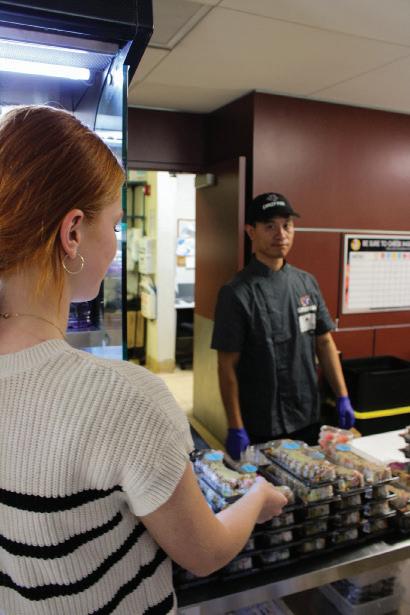
“I wanted to introduce the guys making the food so it wasn’t like I was picking it up from Publix and reselling them.”
Beyond its popularity, sushi and boba were also introduced as part of a broader initiative to expose students to more familiar global cuisines and a wider variety of food options.
“We got a diverse group of kids,” Behrens said. “I listen to everybody talking about their summer breaks and how they went overseas and spent time in Japan. I think though everyone’s familiar with this stu , it is something new we do here.”
Currently, sushi is being o ered every Monday while boba is being o ered two to three times a week. As the year goes on though, Behrens anticipates demand for these items to uctuate and he is planning on buying less or more based on how much students purchase each week.
“I would say instead of 300 this week, give me 150 and then we would slowly back out or add more,” Behrens said. “I could do it everyday if I wanted to, but I do not want to oversaturate the place because then students are going to get tired of it fast.”
In addition to preparing sushi, Crazy Fish Sushi also makes boba, which Behrens decided to bring to Trinity Prep as well. So far, these items have been a major success among students. When sushi was rst introduced, over 400 rolls were sold, with sales remaining just as consistent the second time. e debut
the third time saw sales climbing over 300.
“ e line the rst day was at the door on both sides,” Behrens said. “Students are loving it, and they’re selling out everyday. Everytime (Shao) comes here, he doesn’t have any leftovers from any of the (items).”
In order to assure students that the sushi and boba were being freshly made on the rst day, Behrens made sure to bring in Shao and the
Along with sushi and boba though, the Grille has also introduced foods like grits, oatmeal and Muesli during breakfast. In the future, Behrens also plans on inviting guest chefs and restaurants to sell their food in the Grille. Students across campus have greatly enjoyed these new o erings, viewing them as a refreshing change to their usual lunch options.
“I like how they are incorporating new foods from across the world,” sophomore Akkaash Naidu said. “I feel like this adds a new element to the Grille (and) I think it is just a good thing for all students to try.”
Senior Isabella Moore grabs a box of sushi from the Grille, which is a new item that comes with various options from crab to tuna.

SIX HOUSES, ONE FAMILY
Harry Potter-inspired house system unites student body
Article by Emily Lopez
Graphics by Maxi de la Fuente and Natalie Baron
Welcome to the wizarding world of Trinity Preparatory School of Florida, where every student has recently been sorted into one of six houses: Hay, Maughan, Brokaw, St. John, Ellis or Lawson. A new development this year, the house system strives to further unite the Trinity family. Upper school advisories from mixed grade levels are grouped into a “house” and participate in various competitions throughout the school year.
Although the school community is already known to be tight-knit, division among grades is inevitable. The house system initiative aims to minimize it by encouraging students from various grades to work together and root for each other throughout the year.
“The freshmen, sophomores, juniors and seniors will all collectively be a part of one community, so if you need assistance with anything, it’s like a built-in mentor-mentee system, which we love,” Head of St. John House Michael Brown said.
Each house is led by four seniors, called prefects, who were selected by faculty members through a name-blind application process. In addition to strong leadership skills, Brown believes the prefects should embody the passion for school spirit and connectivity that the program was designed to promote.
With this school year marking the dawn of the house system, the current senior class is responsible for setting a foundation that will


follow among future generations of seniors.
“I feel honored because we’re the very first prefects and we get to choose the colors and the crests for the following years,” Senior and Ellis House Prefect Brinkley Harrold said.
Additionally, the new house system seeks to provide seniors with a significant leadership opportunity.
“We want this to be a preeminent leadership position here on campus,” Brown said. “It would look insanely good on a resume.”
The house system will be predominantly student-led, allowing for students to exhibit their organizational and leadership skills among their peers.
“The faculty members are chaperoning, but the seniors are the ones designing the games, organizing it, managing the logistics, etc.,” Assistant Head of Upper School Sebastiaan Blickman said.
Blickman and Brown ascribe the concept of the house system to the well-known book and movie saga “Harry Potter.” While the Hogwarts houses compete against each other for the House Cup, Trinity students will compete for other various prizes.
“You gain house points all year long, but at the end of every competition, there will be many prizes and rewards,” Brown said. “These could be something like a dress-down day, free Chipotle for your house or skip-theline-in-the-Grille passes.”
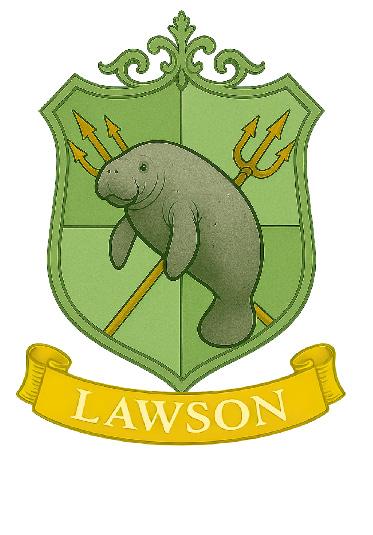

The house system will be integrated into some preexisting traditions here at Trinity in order to limit grade level division and instead focus on creating one united family present throughout all interscholastic gatherings.
“We hope to rope in some (traditions) like Headmaster’s Day to make it a house-based event rather than split up by grade levels,” Brown said.
In addition to the school’s annual traditions, the house competitions will be spread out throughout the year. Student Council has allotted the funds for eight in total — four held on campus and four off campus — during the 2025-2026 academic year.
“The competitions could be anything from a Mario Kart game to a Bake Off,” Brown said. “(Students) would have a better understanding of what would be enjoyable for our campus than (the faculty) does.”
With promising developments ahead for the house system, Harrold is eager to take part in the first big step towards bringing the school community together.
“I think it’s going to connect everybody as a whole, the school, the grades, and people are just going to become more connected and more like a family,” Harrold said.






INTERIM TERM ANNOUNCED
Article by Nikhil Daniel
In January 2026, Trinity Prep will explore a new educational opportunity to expand student learning and experience: the Interim Term. For the first two weeks of the spring semester, students will immerse themselves in classes ranging from “Taylor Swift & All the Tortured Poets” to “Bioethics: Navigating the Science of Right and Wrong.” After a three-year process of approval and planning, Trinity is ready to roll out the initiative, which is set to make waves in the lives of students.
“The Interim Term is a break in the typical curriculum that (Trinity) has and provides teachers an opportunity to offer courses that are outside of what would fit in the regular course curriculum,” Director of the Interim Term and journalism advisor Erin Miller said. “It allows students to take some things that maybe they wouldn’t have the opportunity to take, to explore topics and maybe discover a new hobby or activity.”
Head of School Byron Lawson first raised the idea of offering an interim term nearly four years ago to the senior administrative team. After visiting the Kinkaid School, St. John’s School and the Episcopal School, Associate Head of School Dennis Herron pushed the idea forward and created a committee dedicated to researching if the program would be a fit for campus. Now, after careful planning and thoughtful consideration, the administration is confident that the Interim Term will serve as a long-term, mission-oriented way of boosting the student experience.
“(Students) are going to get a chance to experience what we hope is some valuable
community service, relationship building, classroom experience, travel experience and more over a period of four years,” Herron said.
Interim term programs have been implemented in numerous independent schools across the country, offering courses like snowboarding and antique car rehabilitation. The pass-fail courses offer students an academic experience different from core academic classes.
“In a college preparatory school, we are so focused on preparing for an AP exam or getting a certain grade to look out on a transcript that sometimes we lose track of learning for learning’s sake,” Miller said. “I think that the (Interim Term’s) kind of courses can front-load that and help put that as the primary goal.”
These classes go beyond the scope of Advanced Placement system, providing handson learning opportunities like field trips to Spanish forts to study architecture, a visit to talk to Hurricane Hunters to learn about aviation and crude flare creation to experiment with pyrotechnics.
The Interim Term also includes a program for seniors to engage in a four-day practicum or an eight-day internship experience, with an outside organization of their choosing.
“The (Interim Term is) scaffolded such that (students) are experiencing something at the junior and senior level that has applicable real application to what they are going to be doing in college,” Herron said. “If they’re interested in a career field and we have connections, then we can give them a couple of weeks to spend somewhere like that.”
However, embracing the Interim Term
does come with drawbacks. The foremost concern is the loss of instructional hours as the first two weeks of the spring semester are converted into new courses. Students, parents and teachers have voiced concerns about the implications in course pacing and AP testing.
“I think it might make tests more rushed,” senior Ben Demetriades said. “I’ve had experiences where I have less time to cover a unit, and I feel a lot more lost. I feel kids might need to do a lot more studying at home.”
Trinity is proactively trying to solve the problem of lost instructional time by putting an additional A day into the schedule and removing online half days.
“We’re not ignoring (lost instructional time),” Miller said. “We’re not just barreling through and saying, ‘Suck it up. Don’t worry about it.’ We’re finding those days and those hours in other places.”
Even with a potential challenge in course pacing, many believe that the program is worth losing class time for.
“Learning encapsulates so much more than just these core academic classes, and we should be open to adjusting schedules and making time for these other experiences,” ninth grade parent Brooke Kells said.
The Interim Term will be a lasting change to the Trinity community and curriculum that administrators hope fosters a deep love of learning.
“(Interim) is a time (students) can just go in, take a deep breath and get into something that (they’re) really interested in,” Herron said. “Get to know (their) teachers, and maybe even classmates that (they) don’t normally take a class with. That to me adds to the Trinity Prep family.”
Interim Term Podcasts To Learn More About Course O erings
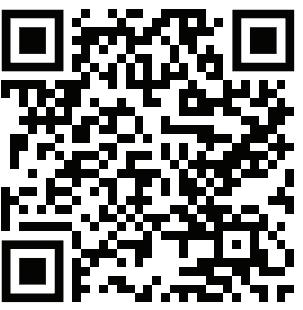
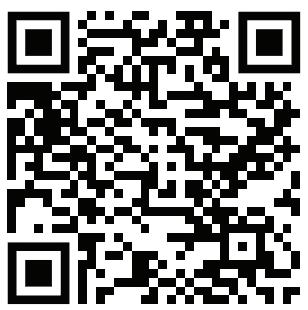
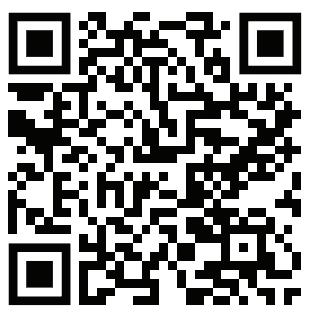


LESSONS FROM THE LAB
Article by Omi Tikalal
Photos by Lola Brown and courtesy of Elmarie Mortimer and Bryan Mortez
Science does not stop at the textbook. In the classrooms of Elmarie Mortimer, Bryan Moretz and Romina Jannotti, lessons are shaped not just by equations or lab procedures but by the years they spent conducting scienti c research of their own. From nuclear physics to plant and cancer research to DNA repair, their experiences in the lab now fuel how they teach, mentor and inspire the next generation of scientists.
Cracking Nuclear Codes
Mortimer’s path to the classroom began in the lab with her PhD work in the nuclear research eld at the Nuclear Atomic Energy Corporation in South Africa. She conducted research on the surface properties of metals and how they relate to nuclear war and the studying of particles inside nuclear reactors. With Mortimer’s heavy experience in nuclear research, she now teaches physics and tries to bring the process to her students while passing along the most important lessons she acquired through her exposure in research.
“Nature is full of surprises,” Mortimer said. “Just as you think you understand exactly what’s gonna happen, then something unexpected happens and you go, ‘OK, let’s keep going.’”
es students to see physics as a way of how the world works. With real-life nuclear research, these experiences ended up creating long-lasting memories for Mortimer.
“Forty-eight hours of severe struggle and going o , I don’t know how many multiple cups of co ee, and about three hours of sleep and nally getting results that we had suspected (were) there, and the thrill of the system (behaving) the way you thought it might behave, it’s just fantastic,” Mortimer said.
Even with a lack of sleep, Mortimer recommends that research is worth it, especially to students who like solving puzzles and problems.
working as an animal care technician, he was tasked with taking care of mice that were being tested on for cancer research and frogs used to study mutations. Moretz was also a student research assistant whose research focused on drought-resistant plants.
“Drought-resistant plants were really cool, mainly because we knew that there was a real-world impact for that kind of stu and the sense that we could possibly save lives,” Moretz said. “And so any sort of research that you’re doing, you always have this end goal of ‘I’m going to have this big accomplishment.’”
Whether it is discussing ecosystems or cell biology, Moretz pushes his students to build resilience, even if they do cut-and-dry procedures.
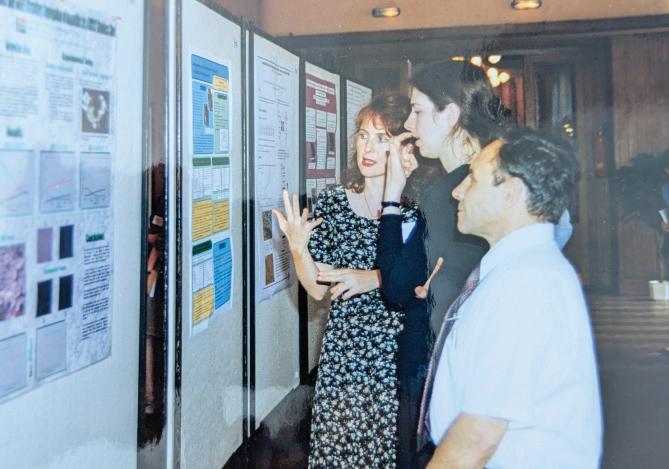
Science is not perfect the rst time, and Mortimer reminds her students that she has learned from her failure and uses it as data. Using that mindset, she tells students that struggling with a problem set or lab does not mean they are bad at science, but instead serves as proof that they are learning how to think like scientists.
“It’s just looking for those connections and nding those parallels and seeing what you can get from that,” Mortimer said.
By connecting abstract equations to real-world applications, Mortimer encourag-
“(Doing research) is (when) you’ve been confronted with something unknown and it’s like solving a puzzle,” Mortimer said. “You get a little piece and sometimes it all ts together, and sometimes it takes time to get it to the point where it ts together.”
Small Stepping Stones
For Moretz, biology is all about patterns and connections. His multiple backgrounds in lab science and engineering give him a technical edge, but he always ties concepts back to their practical use. With Moretz
“A lot of times I like to see them struggle because it means that they’re going through that process of science … and again, it might not work out as they expected, but that’s just part of science,” Moretz said. “We are so used to everything working right the rst time, and we give up too easily, and so being able to have that resilience is important as a scientist.” Moretz emphasizes that no matter what type of data or how experiments end up, small work adds up to big results.
“We don’t really pay attention to or see the end goal,” Moretz said. “We don’t see the light at the end of the tunnel.”
Emphasizing that resilience is key in research and in STEM overall, Moretz encourages his students not to give up if results do not go their way, as in the end, they are learning regardless.
Moretz recommends research to students as something that teaches you what works and what does not work and allows students to investigate anything, even if it is something personal to the student and not a panel.
In 1998, Mortimer presented her nuclear research at the International Suface Science conference in Prague, Czech Republic.




Three science teachers share their experience with lab research
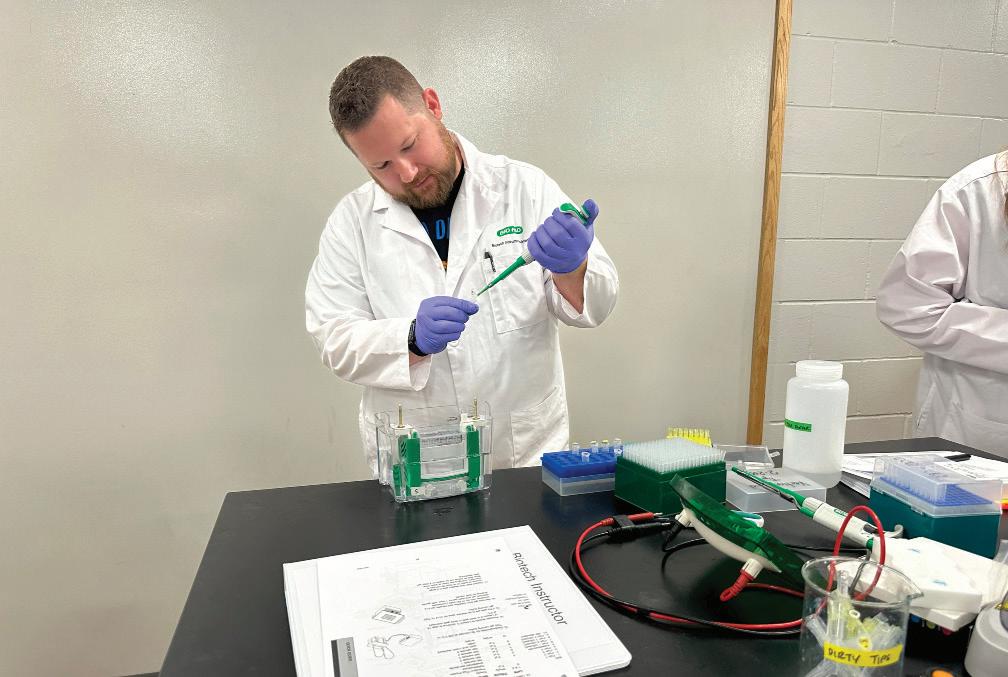
Last summer, Moretz conducted biotechnology research at Brebeuf Jesuit Preparatory School in Indianapolis, Indiana.
DNA and Discovery
Before Jannotti began teaching chemistry, she earned her PhD from Stony Brook University, with her research focused on mitochondrial DNA repair, where she helped uncover the role of ligase 3 in genome maintenance.
“DNA ligase is an enzyme that seals (the) end DNA,” Jannotti said. “If your DNA is circular, you must have a ligase, so the human genome has four di erent genes for ligase. I discovered that DNA ligase 3 was the one that was going to the mitochondria.” at experience and discovery shaped Jannotti’s mentoring style. She taught students to write proposals, defend their choices and learn from mistakes — the same lessons she once practiced in graduate school.
“Be honest, be constructive, but don’t be nasty,” Jannotti said. What Jannotti tries best to do with her students is emulate what she went through.
“I like the idea that you don’t just get feedback from your instructor, but you get feedback from everybody around you,” Jannotti said. “And the idea that (with) feedback, you could tell someone something very honest without being nasty, it’s all in the name of making the work better.” e bene ts of research extend beyond lab skills. Jannotti emphasizes that it teach-
es critical thinking, problem solving and communication.
“It teaches you to think on your feet … to pose a question, and if the answer is still no, that’s still valid information,” Jannotti said.
Cure for Curiosity
As Jannotti used to tell her Independent Research and Design class, the rst step is always asking the right question. For students, getting started in research is often a matter of taking initiative.
“Whatever you can, whenever you can,” Jannotti said. She recommends looking at programs over the summer, such as UF’s Precollegiate Education and Training program, where students work with professors on ongoing projects. Networking is key.
“If you have a school around the corner and your sister is doing research in that lab … ask, ‘Can I stop by on a Saturday and watch what you’re doing? Can I be your tech?’” Jannotti said.
go develop some lm,’” Jannotti said. “And sometimes there would be a blizzard outside and he’d be driving me to the lab … I would go to the lab at 2:00 in the morning and half of my lab would be there. ey would be playing poker (while) doing their experiments. We also back then were very tight.”
Students can learn to adapt, be exible and analyze results even when experiments do not go as planned.
“Take advantage of every opportunity and be open-minded, no matter how big or small the opportunity is, because it will open more doors for students than students think and students will most de nitely learn more,” Moretz said. “ at small work adds up to big results.”
Moretz emphasizes that even though he does not have a green thumb, he still fondly remembers working with plants and coming in every day to measure their growth. Even though one of her favorite memories includes a lack of sleep, Mortimer emphasizes that getting into research is not just all work. Research can bene t students who just want to help out for the good of society as well as those who do it just for enjoyment.
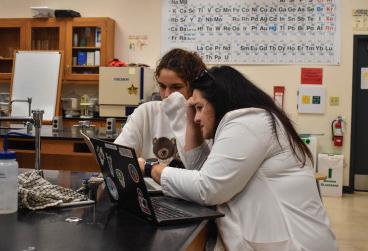
Even small opportunities can give students hands-on experience and open doors to larger projects. e benets of research extend beyond lab skills.
Research can even teach students more than just information; it builds experience.
“I remember being in the lab. I would wake my husband up at 2:00-3:00 in the morning and I would say to him, ‘I have to
“It shapes the way I view life,” Mortimer said. Without her professor encouraging her to apply and take risks for research and without her watching “Advance to Ground Zero,” which got her into nuclear research, Mortimer might not have 29 publications to her name. Research does not have to be a student setting out to solve global problems but can be as simple as getting inspired by a movie. “ ere’s never an end to research,” Mortimer said.
Jannotti helps junior Ava Lieb with an AP Chemistry lab report.

BUZZING ON BORROWED
As
honeybee populations
continue to decline, the entire world will feel the effects

Article by Sami Haddadin
Graphic by Aylin Garibay
In just one year, local beekeeper and Trinity parent Denise Brady harvested 100 pounds of honey from her three hives. But this year, she’s down to barely 25. A combination of aggressive pests, erratic weather and shifting seasonal patterns has devastated her bee colonies, and hers are far from the only ones.
This is not just another quirky “Florida nature event;” this is a glimpse into the worldwide decline of honeybee populations, a trend that soon may cross the point of no return.
The jobs of Western European honeybees can be seen in almost every facet of day-to-day life, serving as a metric for global environmental health and prosperity.
“(Bees) are responsible for 80% of global food and crop pollination, so a third of the food that we eat every single day,” said Aakash Manaswi, a sophomore at Lake Highland who conducts award-winning bee research. “They’re really the most important asset to humanity, and if we were to lose them … it would destroy the global food economy.”
Unfortunately, recent statistics paint a bleak picture for the future of bees, as the issues they face only continue to accelerate.
“Beekeepers lose about 40% to 50% of their hives every single year, and this year it’s actually expected to reach 70% colony losses,” Manaswi said.
The biggest threat attributed to colony loss is the varroa mite. This parasite feeds on the fat bodies of adult bees and developing honeybee larvae, acting as a vector for up to 20 different viruses within hives.
A U.S. Department of Agriculture report from June finds that over 60% of commercial beekeeping colonies had been lost since the prior summer, representing 1.7 million colonies and an estimated financial impact of $600 million from varroa mites alone.
But varroa mites are just one piece to a much larger crisis that beekeepers face. Climate change, habitat destruction and soil degradation are all pivotal factors in the decline of bee populations.
“Extreme weather changes affect the flowering times, and that’s what I saw this spring the most,” Brady said. “Farming losses are another big issue that we’re having that reduces the pollen sources, which reduces the nutrition to the bees.”
While honeybees are key to honey production, they also regulate local grocery market prices. They do this through facilitating natural crop production from pollination, which is necessary to keep import costs down and have greater food availability.
“Immediately we’d see a lot less honey produced … then we would eventually see just less natural food sources available (globally),” Manaswi said. “All these crops will become more expensive and will be a lot harder to get ahold of.”
Although the long-term ramifications of a declining honeybee population have yet to be fully realized, local agricultural sectors are feeling the impact.
“One of the major orange producers was based near the Orlando area, and they had to shut down because there were lots of pests and the orange trees weren’t getting pollinated enough,” Manaswi said. “This means … there’s going to be a lot less availability (for oranges), and they’re going to be a lot more expensive.”
Crucially, however, these problems compound on themselves, making the loss of bee colonies worse over time. That means any meaningful solution must address the entire system, not just one cause, which is easier said than done.
“It’s not just one thing that’s causing a loss of the species, but it’s the overwhelming magnitude of all those things added together,” biology teacher Emily Massey-Burmeister said. “Habitat fragmentation is taking away their food sources and their ability to be able to find mates, then climate change will likely further reduce the size of the population.”
While these major problems require large, coordinated solutions, that starts with local advocacy from the ground up, which is essen-
Supporting local beekeepers through buying their products, for example, offers benefits beyond just a higher-quality good; it also provides the financial support needed to combat rising costs for materials, which is key to maintaining bee colony infrastructure.
“(Beekeepers have) to pay a lot of overhead for a lot of (supplies) that are being shipped and being brought into the United States,” Brady said. “So many different things that the beekeepers use are going up in prices, and that’s impacting them a lot.”
Beyond helping the people behind the honey, there is a growing need to advocate for the bees themselves.
“The best ways (to advocate for honeybees) are to support nonprofits and researchers who are getting involved in this cause,” Manaswi said. “Some people could even get involved in the research itself, and others could support these people. They could repost it, share it and reach out to their local district representatives to get involved or ask them to help in anyway possible.”
Manaswi’s own research led him to create an innovative pest repellent, which involves releasing carbon dioxide into an infested hive and only killing the varroa mites while leaving the bees unharmed.
In the meantime, there is still a lot of work to do, because as things are looking now, the trajectory of honeybee populations is only going to continue buzzing downward.
There’s a lot that needs to continue to go in the upward trends,” Brady said. “Beekeeping has gotten better, people are more aware, they’re doing things to protect bees and they’re handling bees better. But if the climate, weather, farming, all of those things don’t cooperate, then there will not be (enough) progress, because (without) nature … there won’t be bees.”

M TCHA MEN

The rise in “performative males” has the internet in a
Article by Mila Taylor
Photo by Julia Hoskins, Graphic by Aylin Garibay
Matcha. Labubus. Tote bags. Feminist literature. All four of these things have one thing in common: if a male likes any of these things, Gen Z has dubbed this “performative.” The “performative male” trend has spread rapidly across social media platforms, with men using feminine interests or clothing styles to appear more attractive to women, at least on the surface. The trend has become so viral, cities like San Fransico and New York have housed performative male competitions, and even colleges like Yale have joined in. The prize goes to whoever can look the part, whether that’s listening to Clairo, reading feminist literature or wearing baggy jeans.
Senior Victor Fang does not identify with the “performative male” label, but he has said that many of his peers believe he fits this mold. He explains the unfairness that this identification might have.
“I think off of face value, it could sound pretty bad, because it’s not good to have someone act like they’re putting on a performance at all times,” Fang said. “It’s very unhealthy to put that label on someone, even though they might not be doing that.”
It is essential to acknowledge the injustice of dismissing men who do not fit into traditional masculinity. Social media posts making fun of the “performative male,” intending to be funny, are instead reinforcing gender stereotypes and ridiculing men for liking things that society has labeled traditionally female.
“With the political climate of the world, a lot of the time it can be used to make fun of men who are not trying to be very hypermasculine,” senior Connor Brady said. Director of Forensics and gender studies minor Katrina Brominguez believes that the trend differs from early studies of gender, where women would appear “performative” to appear more masculine, in hopes of
gaining voting rights or equality. Brominguez believes that this shift in trend may be beneficial for men.
“It is all performative until it’s real,” Brominguez said. “If it got some men to try less traditionally masculine hobbies than maybe
frenzy
dating lives of Gen Z. Performative males are breaking those stereotypes, attempting to lean into nontraditional roles, whether it is genuine or not. The question is whether this trend will continue despite the criticism toward so-called “performative men.”

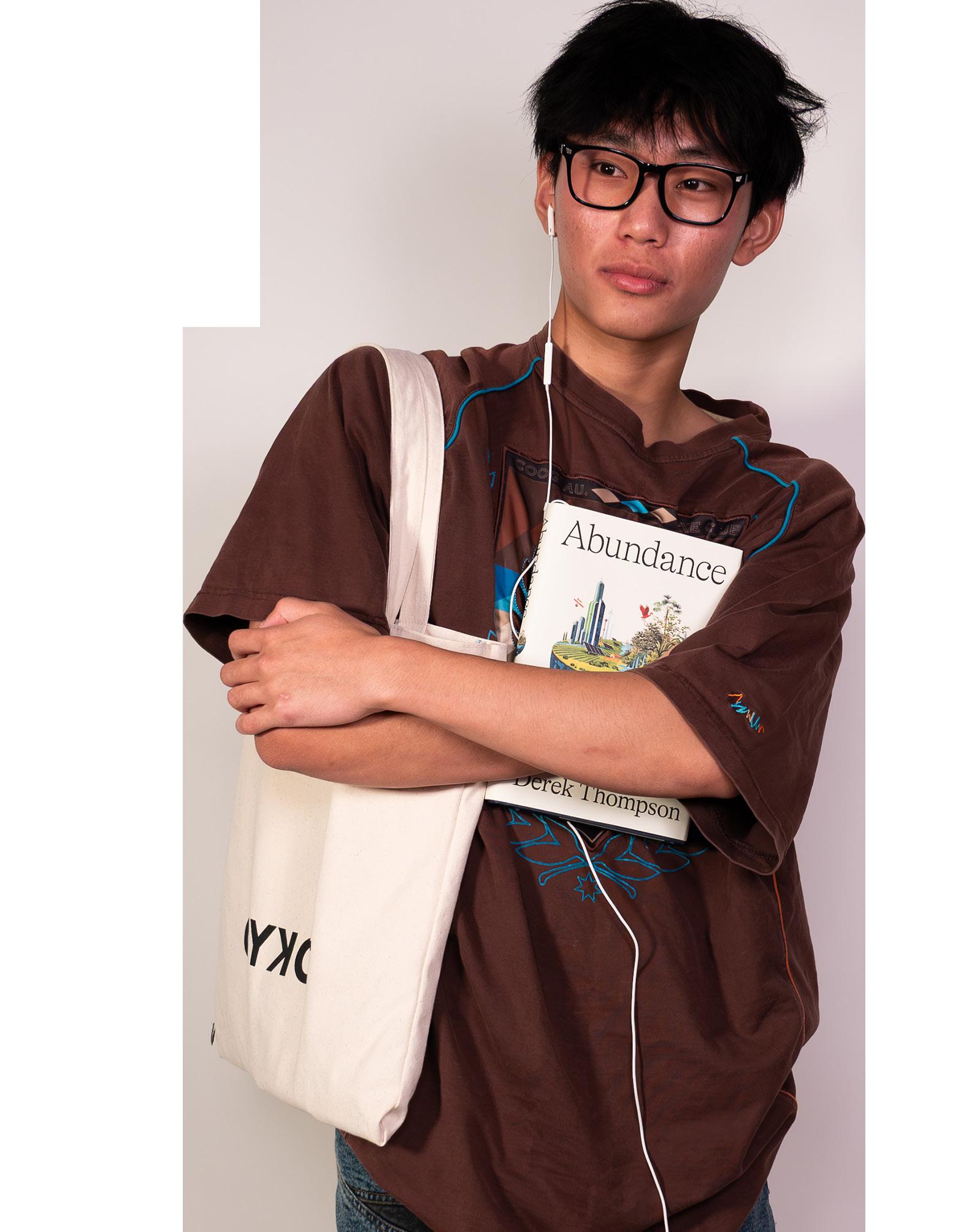

FALLING FOR FALL
Article by Jena Mhamdi
Graphic by Aylin Garibay
After the intense heat of Florida summers, many people can’t wait for fall’s chilly breeze and falling leaves. According to a CBS News article, 45% of people say fall is their favorite season, and it’s easy to see why. Between the food, the shows and the fashion, many people view fall as a fresh start or a time to be warm and cozy.
A popular pastime during fall is baking seasonal desserts, and all fall desserts center around one thing: the warm spices and pumpkin that fall is so fa mous for. Some other flavors on the fall palette include apple, cin namon, chai and maple. These flavors show up in many popular fall desserts, not only through the taste, but also the smell. For example, maple pecan pie, apple cider donuts, pumpkin pie and chai sugar cookies are all fan favorites, according to the New York Times. However, for English teach er Kent Kersten, his favorite fall flavor is not any of the above: it is caramel.
“I do think caramel is better than pump kin,” Kersten said. “It’s less basic, and there’s something pudding-y about the texture of pumpkin. Nobody doesn’t like caramel.”
duced in 2003 and has been a fan favorite ever since. Other popular fall drinks are the Iced Pumpkin Cream Chai, the Iced Pecan Crunch Oatmilk Latte and the Pumpkin Spice Frapuccino.
Seasonal savory dishes to try include a 50-minute white chicken chili recipe and a baked spaghetti, both from the New York Times. Some delectable dessert recipes include apple galette and pumpkin pancakes.

English teacher Hannah Schuttler also loves baking during fall, and her number one dessert is centered around the iconic pumpkin spice.
“I bake a lot of pumpkin bread, and I try to make two or three new dishes every fall … (usually) something with apples and cinnamon,” Schuttler said.
Fall drinks are also a huge part of a fall fanatic’s plate, like the one and only pumpkin spice latte. Most commonly bought from Starbucks, the pumpkin spice latte was intro

Seasonal Shows
When someone says “fall shows,” most people think of Gilmore Girls. Its cozy aesthetic and fall setting are perfect for the season. Some other stellar seasonal shows to watch include “Gossip Girl,” “Wednesday” and “Buffy the Vampire Slayer.” The movie list is even longer with favorites like “Halloweentown,” “The Nightmare Before Christmas” “It’s the Great Pumpkin, Charlie Brown,” etc. While “Wednesday” and “Buffy the Vampire Slayer” are more centered around the spooky side of fall and “The Nightmare Before Christmas,” “Halloweentown” and “It’s the Great Pumpkin, Charlie Brown” are more family-friendly and centered around themes of embracing self-identity, all of these movies are fall-oriented. Schuttler and her friends also have their own list of movies they watch every fall.
“My friends and I are already starting to talk about watching ‘Practical Magic’ and ‘Hocus Pocus,’” Schuttler said. “We don’t do that any other time of the year.”

Fall Fashion
While bathing suits and shorts are the gotos for summer, once it is time for fall, clos ets are emptied and restocked with oversized, cozy clothing. Senior Alexia Carvajal’s favorite pieces of clothing play on this comfy theme.
“(My favorite fall clothing) are jeans, camo pants … I like wearing sweaters and hoodies, too,” vajal said.

Some addition al fall fashion favorites include cardigans, boots, scarves and plaid patterns. According to Vogue, the biggest fashion trends of fall 2025 are school-inspired ensembles, like collared shorts and blazers, silk dresses and sequins everywhere.
Although people around the world wear warm clothes during fall, it’s a bit more difficult to do so in Florida, where even in October, the temperatures are a humid 86° F.
Fall may be a popular season because of aspects like food or seasonal movies, but these aren’t the only reasons. According to Verywell Mind, a mental health guidance website, research proves that fall boosts motivation to pursue goals because it is a temporal landmark, a moment that creates structure for us to see and use time. Fall is seen as the time for back to school, and is still seen as a time for fresh starts, even by adults. Even if you are a die-hard summer or winter fan, there is something in fall to be enjoyed by everyone.
“The fall aesthetic is (great) because there’s so much hope in it,” Schuttler said. “It’s the beginning of the holiday season for a lot of cultures, and … it just feels like the beginning of something, even though it is the end of the year.”





CAFFEINE CRAZE
The appeal of energy drinks is a
Article by Julia Wu
Photo by James Ellzey
Trinity’s culture of high expectations and challenging academics can make it seem like there is not enough time to get it all done. Given the rigorous academic demands and ceaseless feeling of underachieving, it is not surprising that students look for a boost of energy with caffeine once in a while. With the variety of drinks available now, it can be easy for students to succumb to the incessant cycle of energy drink dependence.
Trinity students are not alone in this trend. According to the US Department of Health and Human Services, one-third of adolescents (ages 12-17) consume energy drinks regularly.
Senior Elizabeth Carlin can consistently be spotted holding an energy drink throughout the day. Her schedule consists of leaving her house at 5:30 a.m., going to cross-country practice and then attending her classes. Somewhere in the midst of her day, Carlin will fit in an energy drink.
“When I have an energy drink, I feel like I have more pep in my step,” Carlin said. “It kind of brings me back from the dead.”
The energy drink craze is just as widespread in middle school as it is in high school. Seventh grader Sarah Nieves has not just one but two energy drinks per day. She drinks them to stay alert during school.
“Before school every morning, I drink an energy drink because I want to stay awake for my classes or a test,” Nieves said. “I’ll save the energy and start drinking it during the test so that I can stay awake and so I can do my best.”
Most students refer to energy drinks as an addiction, and this is primarily due to the withdrawal they feel when they go without them. High stimulant and sugar contents in energy drinks contribute to the feeling of addiction, and cycle of “I need it”. AP Psychology teacher Michael Brown explains that the need for energy drinks is not as serious as a real addiction.
“Generally, if you have an addiction, it’s oftentimes negatively impacting your life in some capacity,” Brown said.
dangerous concern
they are equivalent in caffeine dosage. Nieves drinks two energy drinks a day, admitting that she doesn’t know what they contain. According to the 2025 guidelines from Healthy Eating Research, the recommended dosage of caffeine for 12 to 18 year-olds is less than 100 milligrams, which is half the amount of many popular energy drinks.
“On the ingredients list, there’s a bunch of words I can’t pronounce,” Nieves said. “The [ingredients] have so many letters, so it just looks like a kindergartener strung some of the letters together.”
One controversy regarding energy drinks is the marketing towards teenagers, specifi cally younger kids. Energy drink brands have the power to deceptively and unfairly market adult energy drinks to children by packag ing them into colorful cans or naming them fun names. Alani Nu, an energy drink brand popular among students, recently released its new Halloween flavors, “Witch’s Brew” and “Pumpkin Cream,” with the goal of catching the attention of kids and teenagers.
“I feel like it’s the same things that always work on teenagers,” Carlin said. “Bright colors and fun flavor, for example my favorite flavor of the energy drink Alani is ‘pink slush,’ and I have no idea what that means.”
Although energy drink dependence might not seem bad at first glance and even appears normalized and cool, most haven’t consid ered the negative health symptoms developed from them. Energy drinks have been proven to pose many risks. Ingredients found in en ergy drinks such as “Taurine” and “Gaurana” have been linked to an increased heart rate and blood pressure and anxiety. “Ginseng,” a plant extract found in energy drinks to improve cog nitive function, have been proven to cause in somnia and headaches.
Although energy drinks are relatively new, they can also pose long term effects on the body such as irregular heartbeat, liver damage and acute kidney injury, accord ing to the National Library of Medicine.
body such as irregular heartbeat, liver damage and acute kidney injury, according to the National Library of Medicine.
“My advisor from last year told me that one of the energy drinks, specifically Alani Witch’s Brew, can cause sudden cardiac arrest,” Nieves said. Amanda Dean, Health and Wellness teacher and PE coach, states that marketing can be misleading.
























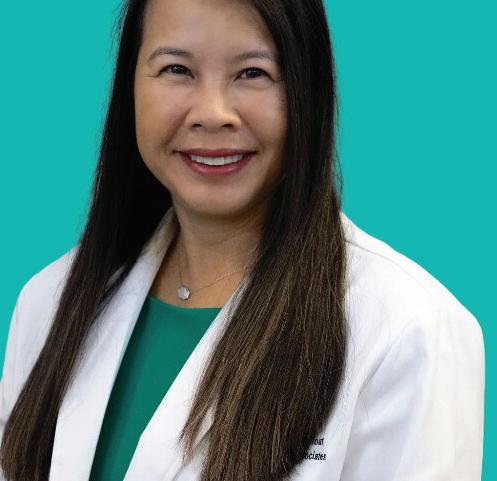



















BACK TO SCHOOL BUZZ
Article by Skyler Campbell
Photo courtesy of Laith Choudry
A variety of noise surrounds the first week of school — noise from the bustling hallway, noise from the loud parking lot and the men tal noise of the upcoming responsibilities ev eryone has. For sixth grader Laith Choudry, the noise represents the discussions around the new schedules and fresh routines. For se nior Jack Wermuth, it’s a mix of the friendly conversations held when reconnecting with peers and navigating the stress of college ap plications. As Trinity siblings at opposite ends of the journey, these two offer a unique per spective on how students grow and change their view on what noise means.
Choudry takes a practical ap proach, channeling the noise into a focused energy, adjusting to a new schedule and spaces.
“The first thing I do is I ask my teachers questions about the class and how they grade everything,” Chou dry said. “It’s to get more info about the class so I know what to do.”

Senior Jack Wermuth and sixth grader Laith Choudry pose after getting paired together at Senior Investiture.
sonality is,” Choudry said.
For Wermuth, the first day of school is always exhilarating. He takes his time to soak in all of the familiar sights and sounds of Trinity, letting himself ease back into a routine after summer break. The buzz of conversations between friends, the noise of bells and the feeling of being back to school are enough to inspire a carefree attitude for the day.
“It’s exciting when you get into your advisory, or you’re coming in on the first day, and you can hear a bunch of people talking, especially in the parking lot,” Wermuth said. “Everyone’s pulling in … and you can hear a bunch of the voices, and that’s exciting because you get to see your friends again.”
After continuously hearing the same lecture on the syllabus rules and orien tation speeches, however, the noise begins to grow monotonous. Choudry can easily find himself in his own head during the first week.
“I zone out because I get bored of hearing the same thing every single day for the first couple days,” Choudry said.
While he tries his best to stay present, oth ers aren’t always mindful of their noise levels. Although this can make focusing challenging, Choudry has found strategies that help him tune out the distractions.
“When I have a noisy class, I usually ask the teacher if I can put my earpods in and then set them on noise cancellation,” Choudry said. “So it’s a little bit easier for me.”
School is not always about silence and fo cus, Choudry also enjoys the noisy buzz that comes with chatting.
“I like hanging out with the louder people because it’s nice to get to know how their per



While the first day can be thrilling, the pressures of college applications can quickly bring down the mood. School provides a distraction to the mental noise, but once it’s over, getting home and unwinding can be hard when supplemental and application
“When I get home, it can be distracting if I’m relaxing or trying to sleep, especially if I realize something’s coming up for college,” Wermuth said. “That mental noise is hard to sleep through.”
Senior year brings more than just mental noise. The conchatter, bells and hallway distractions can make focusing difficult. Wermuth, however, has learned how to block out the
“I get distracted really easily,” Wermuth said. “I don’t really work against it that much, but if I really need to focus, I’ll go to the library and just go to one of the study rooms.”
While Wermuth knows how to find a quiet space when he needs to focus, he also thrives on being loud and having fun with his friends to help block out the overwhelming noise that comes with being a senior.




“(My friends and I) are able to get through because we have a lot of support networks through our friendships,” Wermuth said.




NONSTOP NOISE
Article by Taylor Griffith
Photo by James Ellzey, Graphic by Maxi De la Fuente
Strolling through Trinity Prep, the vibrant sounds of school life resonate through the quad, library and study halls. Yet at 6 a.m., the cross country team meets in complete darkness at school. The campus is tranquil, and the only thing runners might hear is the birds chirping or the distant noise of the lawn mower. Junior Liv Gamboa, a cross country runner, has found this a time in her day when she can enjoy the quiet and have time to herself.
“I really like the silence (during my run) because it is peaceful and a change from my normal day-to-day, friends socializing and a loud environment in the normal hours of school, so the silence just gives my mind a break,” Gamboa said.
As she runs around the campus, she has the option to put in her headphones and listen to music, but instead uses the time for herself and takes in the silence.
“I like to reflect on myself and think about the day I have ahead of me and I find the silence very peaceful because I get time for myself,” Gamboa said.
Although time alone can be hard to come by, the benefits that it has, can lead to a more productive and peaceful day.
“The silence in the morning just brings this peacefulness over me, and it carries throughout my day,” Gamboa said.
Silence is a form of self-care that can allow someone to step back from the normal business and find some peace. According to Psychology Today, people need constant stimulation in order to fill the void of silence and avoid negative experiences with thoughts. Simply, people hate being alone with their thoughts and need to have some kind of entertainment to avoid this. For some, embracing silence can be harder for others. For those in a large family, constant noise is a given, so silence can feel daunting. This is not something that the brain has always done, this is a learned behavior.
“I feel like I can just get things done quickly with constant noise around me,” sophomore Adam Agresta said. “It’s easier.”
Students choose to turn to music when they find themselves in a place of quietness. Many students take a study hall as part of their schedule. But most students do not just do their work in the quiet that the study hall provides, they have their headphones in and are working with some kind of noise.
Many high schools, including Trinity, generally lack a place of quiet, but when students are given the opportunity to have a quiet time during study hall, they tend to avoid it.
“I think some of it has to do with, especially in our world today, we’re inundated with so much … that we’re not used to existing in silence, and so when we’re forced into it, it’s uncommon and it’s weird,” psychology teacher Michael Brown said.
Carving out time to embrace silence can be difficult; doing it in small chunks can be a step in the right direction. According to Attain Behavioral Health, spending 10 minutes in solitude can lead to reduced muscle tension, decreased blood pressure, regulated breathing patterns and lower heart rates.
“I think that the best way to become more mindful is to do five-minute segments,” Brown said. “Set a timer on your phone and just be in silence for five minutes, and whatever happens, happens, and if you find yourself thinking about things, sure, think about them.”
Acknowledge the discomfort in the silence, practice mindfulness and learn how to become peaceful alone. Many people lack the time for self-reflection and process their own thoughts, but by forcing yourself into this, the benefit of having your thoughts under control will lead you to a calmer, less-stressed mind altogether.
“The idea of clearing your mind is very difficult,” Brown said. “I would encourage people not to, just let their thoughts come, let them roll.”


Ethan Apicella ’30 (top) listens to music during study hall. Sophie Yamada ’27 (middle) runs during the quiet morning.




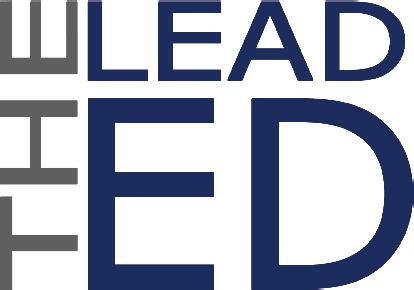
Ideally, a college preparatory school should make decisions that prioritize student learning and prepare students for their futures. e dress code should not be the exception to this trend. However, the most recent change to the dress code prohibiting men from long hairstyles and earrings seems to have little in line with either of these goals.
Across the decades, the formality of the dress code has eased up. In past years, male students had to wear ties, and then at other points were required to wear pants during colder months.
ese requirements have since been done away with. While Trinity has gone through decades of dress-code iterations, a common thread has been a gendered dress code.
“Having a clear delineation between males and females in the dress code … (is something) that administrative leaders of the school thought (was) appropriate,” Associate Head of School Dennis Herron said. “So we have to operate within what that is in terms of how males dress and how females dress.” is delineation does not exist in college, though. As a college preparatory school, there is an obvious emphasis on mimicking the college environment, as evidenced by o ering college-level courses. ere is no reason Trinity should mirror most aspects of colleges except the dress code. Administrators acknowledge that an objective of the dress code is to establish a more professional setting.
“( e dress code should) create somewhat of a professional environment for students,” Herron said. “So when you come to school, there are behavioral expectations. ere are cultural expectations on campus.”
For Trinity to most e ectively cultivate a professional setting, it would make sense that they match the trajectory of workplaces. Across the board, many dress codes have become less gendered. According to HR Consultant Brightmine, only 4.3% of workplaces contractually enforce dress codes. Among workplaces
DRESS TO IMPRESS
A gendered dress code is not necessary to prepare students for college or careers
that have an expectation of dress, more than a quarter of them have informal expectations that are frequently less gendered.
For instance, Google has no o cial dress code for its employees, and male nurses at Advent Health are permitted to wear earrings. Many students are looking to move forward into the tech or health industry, so the best way to prepare them would be to emulate those environments.
Additionally, reinforcing ideas that only women can wear earrings or only women can wear long hairstyles directly undermines student comfort. Accessories and hairstyles are directly related to how people want to express themselves and, more importantly, how they want to be perceived by the world.
“I’m really self-conscious about my hair for some reason, and when it was long, I felt like it was really good,” seventh grader Aviad Johnson said. “So when I had to cut it for the rst two weeks, it was a really weird experience for me because I was used to walking around with a completely di erent hairstyle.”
Undermining student comfort is detrimental to learning. According to a report
Editoral Vote:
published by the Department of Education, student comfort is directly related to student self-e cacy and completion of coursework. Sti ing student comfort has the direct impact of sti ing their academic achievement.
Rather than forcing students to follow rules that they will likely never have to encounter in a career setting, Trinity should focus on building habits that they will need to use.
Long hairstyles and earrings can be professional, so rather than avoiding them entirely, Trinity should ful ll its role as a preparatory school and help students understand how to wear long hairstyles and earrings in professional settings.
“I think that if you’re going to have long hair, then you should train (students) on how to maintain long hair,” Brominguez said. “Messy long hair and well-done long hair are two very di erent things. One can still hold up in a boardroom ne.”
e lead editorial expresses the opinion of the Trinity Voice editorial sta . Please send commentstovoice@trinityprep.org.
e lead editorial expresses the opinion of the TrinityVoiceeditorialsta . e vote is shown here:
YES:


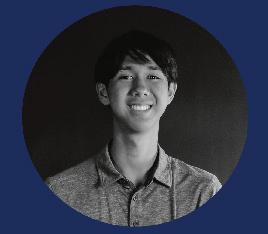






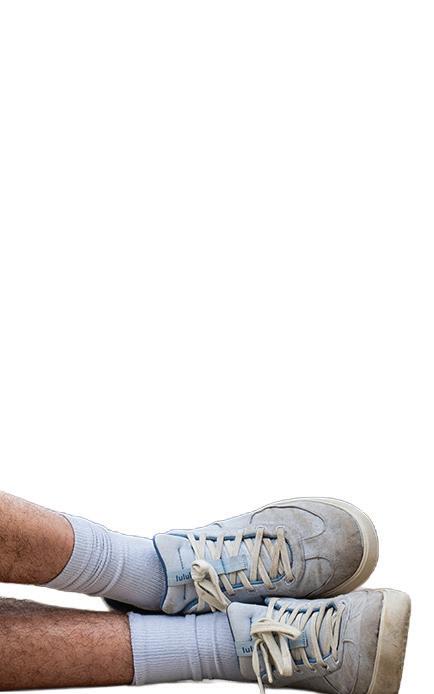


THE COMMENTAARON:
FAIR, BRAVE AND TRUE
In order to be a Disney princess, one must meet the following criteria: special hair, magic hands and daddy issues.
I would argue that I have at least two of those, and yet here I am, writing alone in my bed rather than ruling over Arendelle.
So while cartoon royalty is a status few can ever hope to reach, what being an American in 2025 has taught me is that anybody can be a leader. I suppose Donald Trump’s hair meets the criteria for both President and princess-hood.
But when I say “leader,” I don’t mean the “fair, brave and true” or “whoever is worthy shall possess the power of or” kind of leader. I mean the Executive Activities Coordina-
tor of a club nobody shows up to. Yes, that’s right, I mean YOU!
Time and time again, us students hear the word “leader” preached at us like it’s the Lebron James of a college app resume. We are told that being a leader means cleaning up after yourself, listening to the teacher and being a good role model — last time I checked, that’s just called being a decent human being.
Leadership at Trinity is like the Grille’s sushi: it looks great when everyone is flocking around it, but it’s not worth the trip to the Holloway bathroom 30 minutes later.
Here is my belief: be a follower. Now I don’t mean that in a discouraging, condescending kind of way. I simply mean that there is value
in being a participant rather than clinging on to some meaningless title.
Don’t put yourself in a box — try new activities, get inspired by others and once you find what you’re passionate about, the leadership opportunity will eventually come to you.
Leadership must be better understood as a powerful position used to guide others, and it collapses when everyone tries to claim it for themselves.


Peace and love, Snow White



After all, when everybody is a leader, nobody is.





HOME AWAY FROM HOMEWORK
Article by Ashwin Anand
Graphic by Natalie Baron

Mandatory homework has long been lauded as an aid to learning. And it certainly is one: a Band-Aid. Unfortunately, a deeper issue lies beneath.
“ e primary purpose (of homework) is to practice and reinforce skills and concepts that we’re going over in class,” Head of Middle School Stephanie Dryden said.
O ering students that opportunity to strengthen their understanding is great. However, as students age, mandatory homework becomes not only a hassle for the students who do not need it but also a shortsighted handholder for those who do. us, it must be phased out in high school in favor of optional assignments to be completed as needed.

Furthermore, while a deadline and grade may be necessary to keep younger students on track, maintaining that rigidity through all of high school inhibits them from guring out how to learn on their own accord. An endless torrent of mandatory homework does not build competence; it builds dependence.
“Twelve-year-olds (are) not so autonomous,” English teacher Hannah Schuttler said. “But at 16, 17, 18 … you’re at that point in your life where you are going to become a person who makes your own choices in a year and a half, which is awesome and exciting, but we also need to prep for that.”

Any work required at home should add something the student could not have gotten during the school day. Assigning at-home reading, for example, is appropriate because it prepares a student to adequately engage in class.
Mandating a whole worksheet consisting solely of previously covered material is not. ough the assignment might be valuable, the onus must be on students to decide when they feel comfortable enough with the topic. For some, this may look like three more packets; for others, it may be none.
“Once you’ve got the concept (and) you can do it, then it’s just rinse and repeat,” science teacher Elmarie Mortimer said. “If a student has a skill, then I’m not going to punish them for getting outside and getting fresh air and enjoying life (instead of) just sitting there, showing me over and over that they have that skill.”
e only reason for a student to complete 15 additional math problems on a topic they have already mastered is to avoid a zero in the gradebook. When this drudgery becomes unbearable, students turn to quick solutions, nullifying the goal of extra practice.
“(Many students) who do the homework now when it’s mandatory still don’t learn it,” senior Katia Lyakh said. “ ey just cheat (on) it. ey’ll run it through their calculator or through Chat (GPT).”

Still, many older students remain uncomfortable with the idea of their work being voluntary, fearing they lack the intrinsic motivation to do it.
“If homework was optional when I was in high school, I wouldn’t have done it, which would have been very bad for my learning,” Class of 2023 alumnus Andrew Lopez said. “If someone hears ‘No homework,’ they’re not doing homework.”
In that case, most high schoolers either do not see the underlying educational purpose of homework or do not care enough to apply that purpose to their own lives. Both are issues we ought to address.
Mandatory homework may boost short-term learning outcomes, but it does so at the expense of instilling a lasting desire for mastery. Without the decision on their shoulders, students will not learn to appreciate the value of the work that exists for their own bene t.
“We call ourselves a preparatory school,” Mortimer said. “We’re preparing you for life, and in life … that is a big thing, that skill of ‘ is I can do. I don’t have to worry about it. is I can’t do. I need more help with (it).’”

“If a student has a skill, then I’m not going to punish them for getting outside and getting fresh air and enjoying life (instead of) just sitting there, showing me over and over that they have that skill.”
- Elmarie Mortimer, science teacher

Mandatory homework should be phased out

Lopez, however, believes that mandatory homework is a necessary component of the college preparatory process. A current junior at Vanderbilt University, he now has a much greater workload than in high school, with most of it still being required.
“A lot of students in high school who are at the top of their class … have to transition into doing a lot more work, and that is something that is super challenging for them,” Lopez said. “And I think that administrators and faculty members have the foresight to see that (and) students don’t, because I didn’t.”
We must consider the tradeo : Is it best that we focus on shaping students to thrive in a college setting if that sacri ces the real lesson? In the long run, the choices that determine our lives are the ones we make with no one forcing us. Until students realize that, they are not pursuing excellence. ey are pursuing a deadline.

For students’ good, we should start to shift away from mandatory homework in ninth grade, gradually transitioning into an entirely optional homework scene by junior year. Most students at that age have been exposed to advanced classes and committed their out-of-school time to speci c passions.
“Junior, senior year, make it optional so people have the time to study for what they need to study for (and the time for) extracurriculars,” sophomore Lucas Le Douaron said. “Some people might be going for scholarships in sports or debate, and that interference from homework kind of stunts that.”

Across all grades, students should re ect on their workload and reach out to their teachers to discuss how it could better suit where they are in the learning process.
“I think we’re a small enough school and a strong enough community that those kinds of conversations can happen,” Dryden said. “It’s about bringing the ‘why’ to the fore … If I haven’t made that ‘why’ clear, then whatever I’ve assigned can be vulnerable to the tag ‘busywork.’”
Once students make an e ort to understand the purpose of their work — and make the active choice of whether that purpose is in line with their current needs — they can block their time according to what will actually be of value to them and not just what their Canvas calendar commands.
Mortimer somewhat takes this approach with her AP Physics classes, where she assigns minimal required homework but o ers ample optional practice problems for students to do as they wish.
“I really liked the way that Dr. Mortimer did homework,” Lopez said. “I never did (the extra problems) in Physics 1. (But) in Physics 2, I realized, ‘OK, I need to do these problems because I don’t understand everything well enough with just doing regular homework.’”

ere will inevitably be students whose performance goes down without forced reinforcement. Ideally, this would be a wake-up call encouraging them to think more deliberately about their learning. However, if certain students are unable to recover on their own, required homework can be reintroduced until they are back on track.
Trinity already has a successful program that follows this model: study period. Any student can choose to attend a teacher’s study period, but it becomes mandatory when their grade drops below a certain threshold. A similar policy for homework would allow students to manage how they learn outside of class while retaining the guardrails of structure for students at risk of failing.
Implementing this system will take work. But it is time to rip o that Band-Aid — because real learning is more than skin-deep.




GAIN OR GAMBLE
Creatine fuels athletes while sparking debate over risks
Article by Ben Kleiman
Photo by Lola Brown
It is not a hydration drink. It is not a protein bar. It is a scoop of white powder found in water bottles at sports practices: creatine.
Creatine is a naturally occurring compound found in proteins like red meat, chicken and sh, but it is more commonly used to enhance athletic performance. e body naturally produces creatine and stores it in muscles, creating a quick source of energy during high-intensity activities.
Because of its e ects on muscle growth, recovery and cognitive bene ts, the supplement has rapidly surged in popularity, with sales increasing 183% over the past 2 years, according to Nutritional Outlook. e supplement also helps with muscle contraction and blood circulation too, making it desirable for all athletes looking to get an edge.
Coming in various forms from powder to chewables to liquids creatine monohydrate is the most used version of creatine among athletes. Athletes like varsity quarterback Joe Macau take the supplement because of its long term e ects on muscle growth.
Macau’s play style has been a ected by creatine. Macau is able to play with more physicality than before taking it.
“I started using creatine for the rst time this summer,” Macau said. “I began creatine only being able to squat 135 pounds. After (taking) creatine for a few months, I now can squat 205 (pounds).”
Muscle development takes time and work; so some in ation of the muscles may be a visual e ect, caused by the water being absorbed into them.
Its bene ts are not limited to just physical appearance and performance; it also helps with post-performance as well. A study published by Biomed Central found that athletes who took creatine experienced faster recovery of muscle soreness after exercise.
“(Creatine) de nitely helps with relaxing the muscles and recovery,” Wilson said. “It’s not a full on protein where it’s going to help
you to build muscle, but it is a type of amino acid that can help with that sports recovery when taken at the proper dosage.”
Creatine does not exclusively help athletes physically. In addition to muscles, the brain also stores creatine, which, with additional creatine supplement, can help the body improve cognition and memory. Demographics including the elderly are consumers of creatine because of their role in maintaining brain function with age.

While creatine is helpful, it is important to understand the proper way in which athletes should use it. Athletes must hydrate in order to account for all the water being pulled into the muscles by creatine. A lack of hydration can lead to cramping, dehydration or tremors.
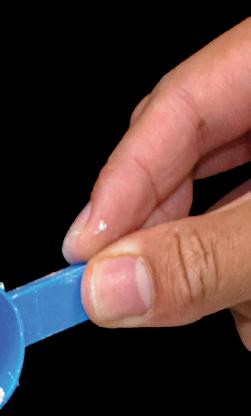


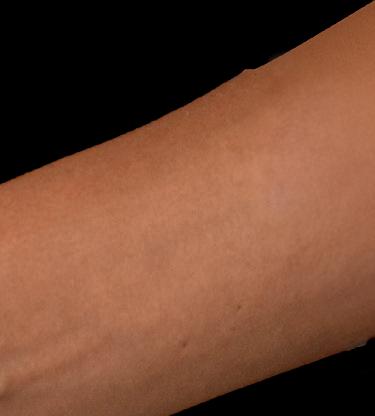

shoots o . Your body can’t respond that fast, so your body is going to go into a spasm, which you experience as tremors.”

Gri n’s dosage placed an additional strain on his kidneys, which are necessary for ltering waste products in the blood stream. Even in healthy athletes, an overload of creatine temporarily overworks the kidney.
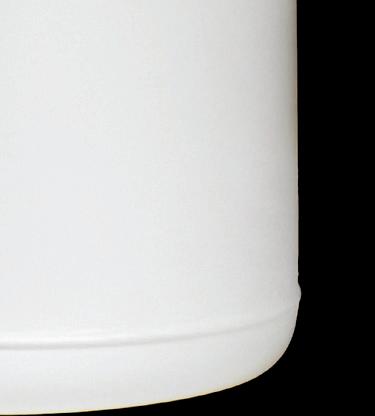
American golfer Ben Gri n experienced an unexpected episode during the nal round of the 2025 BMW Championship. Prior to starting his round, Gri n consumed 15 grams of creatine, three times the recommended dosage of 5 grams. Gri n additionally did not follow his dosage with su cient amounts of water. Shortly after, he began to feel extremely shaky and experienced tremors.
“ ere’s only so much (creatine) the body can take,” Wilson said. “When you’re taking supplements in high doses, you’re putting your body at risk. It a ects your muscle’s response to the neurological signal your brain
“ e recommended dosage is about 3 to 5 grams,” Wilson said. “When you’re under 18, you’re still in your growth and development stage, (whereas) someone that’s a little bit (bigger), who (is) kind of past that stage can use a little more. Under 18 (grams), the dosage can vary based (on) size and protein consumption.”
With both positive and negative e ects, creatine has quickly become one of the most polarizing supplements available to athletes. Although athletes can reap many bene ts, those bene ts may be nulli ed if the supplement is not taken in moderation or with proper hydration.
“Be smart about using creatine,” Wilson said. “It could be your best friend or your worst enemy.”


WHOOP, THERE IT IS!
Article by Thomas Bonos
Graphic by Natalie Baron
Before even thinking about breakfast or anything else, every morning, Trinity alum David Hull methodically checks his sleep and recovery score on his Whoop app. This app is connected to a fitness wearable, which accurately tells him his strain (which is physical activity), sleep and recovery associated with those two variables. For Hull, wearing this band represented a disciplined and systematic approach to monitoring his health, allowing him to ultimately play better on the lacrosse field and in his everyday life.




Fitness wearables change the way athletes optimize their well-being
Trackers and bands, like Whoop, have risen in popularity, allowing athletes and activity enthusiasts to get feedback on their everyday lives, showing the effects of both the good and the bad on their bodies. Hull finds that the data he gets back from his wearable helps him build healthy habits and avoid many of the pitfalls that can undermine his performance and well-being.
“The app gives you (feedback) on recovery and sleep, to determine some habits that need to be made,” Hull said. “It really notices what food you’re taking in, how much sleep you’re getting, what activities you’re do ing ... I’ve noticed from the data that I need to eat better and treat my body better, and I think the Whoop does a really good job of letting me know that when I don’t notice it.” recover.
Previously, the advanced technology used in modern de vices was reserved solely for research institutions and sports organizations.
Recent technological advancements have made these wearables less costly and more viable for the general public and sports programs. Fitness wearables take the modern health monitoring to allow on to better understand their body.
These devices monitor the strain of a partic ular activity and create a recovery score based off of that. Using fitness wearables over extended periods of time allows them to produce accurate and progressive results. Compiling the data allows wearables to predict the users habits. Similar to Hull, Assistant Head of Upper School and former Division I soccer player Sebastiaan Blickman experienced comparable results from wearing the Oura Ring.
“(On the app) I always check my steps (and) my sleep score every day in relation to my goal,” Blickman said. “Gamifying your day (like that) is a fun way to get through the day and a big step to understanding health.”

sports insights and analytics of on-field technology. Products like Catapult and Stat Sport vests monitor athletes’ field performance, GPS mileage and sport-specific statistics. These products are both beneficial to athletes and coaches, allowing them to gauge where their team and individuals are in relation to their fitness goals.
“As a coach, it’s good to get the data and information from your players,” Blickman said. “We used to use (the vests) to set performance benchmarks, track players on the field, and set goals for what we want to get out of a

This technology allows for a community of like-minded athletes. Users can add friends, coworkers or peers to an app and share data with them. This pushes competitiveness for users and allows them to work towards their friends’ performance.
“I love the community as pect,” Hull said. “It pushes everyone to do their best and work harder, and if it’s not, then at least it tells you where you are amongst your team (or friend group) and what you can improve on.”

Technology similar to bands and wrist fitness wearables has also led to advancements in
from the overall purpose, ulitmately doing the opposite purpose. UK’s most fit woman Aimee Crigle does not wear any fitness wearable in the periods leading up to the competition, believing that it will impact her mental well being. Studied in moderation, the data can help athletes to push their limits but the over consumption of data can actually push you further away from your goals mentally.
“If the thing that dictates whether you are going to have a good or a bad day, is a number on an app, you’re going to be subject to the whims of that always,” AP Psychology teacher Micheal Brown said. “I can totally see how such a fixation on a number, or something tracking your data … (is) no longer in moderation and no longer a tool (to benefit you).”

D-1 DILEMMA
The pros and cons of professionalizing D1 college sports
Article by Sammy Lou
Graphic by Maxi de la Fuente
For decades, “student” always came before “athlete” for Division I student-athletes. They received little to no financial compensation for their athletic performances, no matter how big a star they were. Now, major shifts in the athletes’ status are changing the rules of the game.
On June 6, 2025, a settlement was approved in Supreme Court case House v. National Collegiate Athletic Association (NCAA), which allows DI colleges to use up to $20.5 million of revenue per year to directly pay their athletes starting this fall. This follows a 2021 change in NCAA rules and state laws that reinstated name, image and likeness (NIL) licensing. With NIL deals, student athletes could get paid via third-party companies or organizations, but only the highest-profile athletes benefited. Now, talented but lesser-known DI athletes will get compensation, as well.
This new deal is a big step in the right direction for student-athletes, as well as DI college-bound high school athletes. But it still fails to recognize college athletes for what they effectively are: professional athletes and,

therefore, employees. The question of “employee” status has been a hot topic of debate for years.
These days, college sports events can easily fill basketball and football stadiums with over 50,000 attendees. Last year, according to ESPN, a whopping 22.1 million people watched the college football championship.
Considering that some coaches, whose job hinges on the performance of these very athletes, get paid tens of millions of dollars per year, it’s hard to call DI athletes “amateurs” as the NCAA still defines them.
Furthermore, unlike DII or DIII athletes, DI athletes’ schedules and “work” conditions are under strict control by their coaches and school. Under standard definitions of employment, it makes sense to finally recognize college athletes as professionals.
Officially calling them “employees” would entitle college athletes to all of the rights that are outlined in the National Labor Relations Act, including the right to unionize. Athletes would be able to collectively negotiate their pay, working conditions, schedule and health accommodations. They would also be able to challenge unfair treatment like having their scholarship taken away if they get injured. If this change happens, we might see contracts similar to those being signed in the NFL or NBA and the emergence of players associations similar to the NFL Players Association.
Despite the revenue from major sports, giving employee status to all athletes could be unsustainable for many schools. To account for extra pay and benefits, schools might start cutting their smaller, less profitable programs, only keeping football, basketball and other big money sports.
Also, Title IX requires publicly funded institutions to provide equal opportunities to male and female athletes, but it’s unclear how it would apply under a new system.
Additionally, smaller schools would simply not be able to afford giving all of their athletes the benefits and contracts that they would be looking for. While top programs in the power conferences would bring in millions of dollars from football and basketball, those in smaller conferences might barely break even.
Many college athletes certainly meet the requirements to be defined as an employee, and they should not be permanently blocked from being granted that status. But while those athletes deserve the same rights and protections as any regular employee, the NCAA and colleges first have to prepare for this major shift and put the proper frameworks and guidelines in place to address the issues and inequities that will inevitably arise.

It is easy to quickly take the side of the athletes and say that the NCAA is being unfair for trying to withhold these benefits from college athletes. However, given the scale of such a change, it is uncertain what possible repercussions there would be for college sports as a whole. Guidelines are needed to ensure that employee status would not disproportionately benefit certain sports at the expense of others.
According to an article from Yahoo Finance, football is the clear top revenue generator for schools, bringing in an average of $31.9 million per school per year. Basketball comes in a not-so-close second place at $8.1 million, and hockey and baseball represent another significant dropoff in revenue.
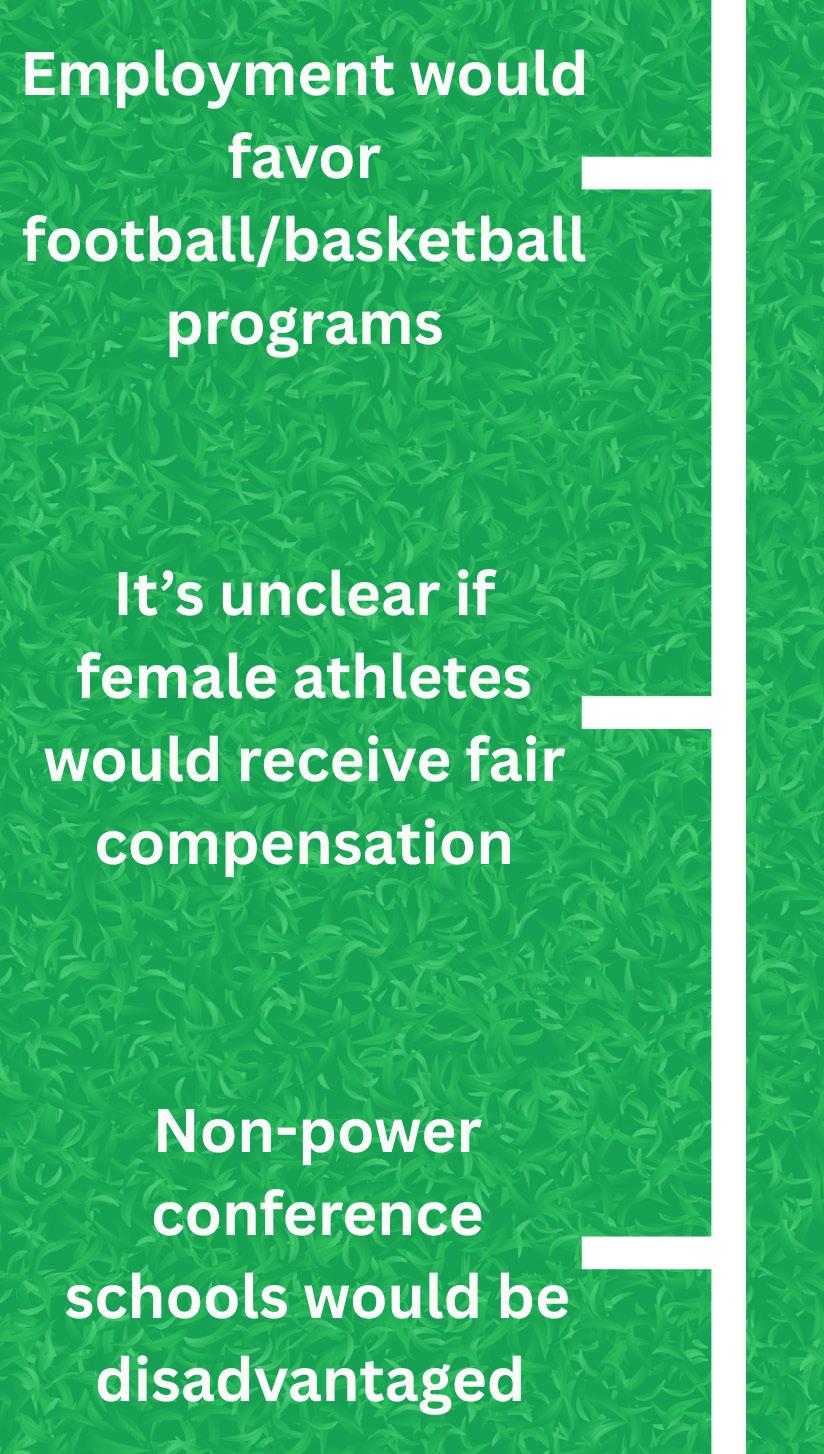


Puzzles by Mila Taylor




ACROSS
1. White powder for drinks is used to enhance athletic performance. (Gain or Gamble)
5. _____ Sankar Science Center (A New Space to Rethink STEM)
7. Genre of literature that is popular with “performative men.” (Matcha Men)
8. Type of mite that infests bee hives. (Buzzing on Borrowed Time)



October 2O25 Puzzle






DOWN
2. Popular energy drink brand with a “Witches Brew” flavor. (Caffiene Craze)
3. Only playwright in Puerto Rico to win the nation’s top theatre playwright award three times. (Acevedo’s Artful Arrival)
4. New cuisine offered at the Trinity Prep Grille. (New Flavors, New Favorites)
6. Sport that is the top revenue generator for schools. (D-1 Dilemma)

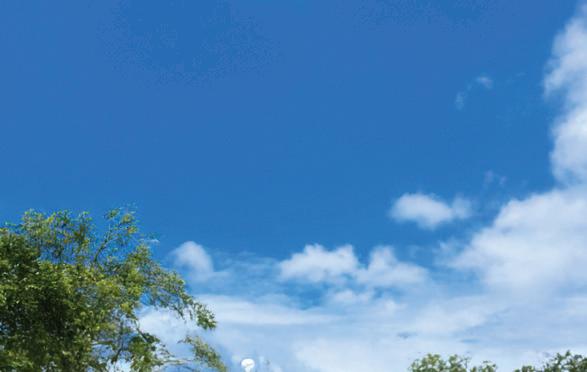








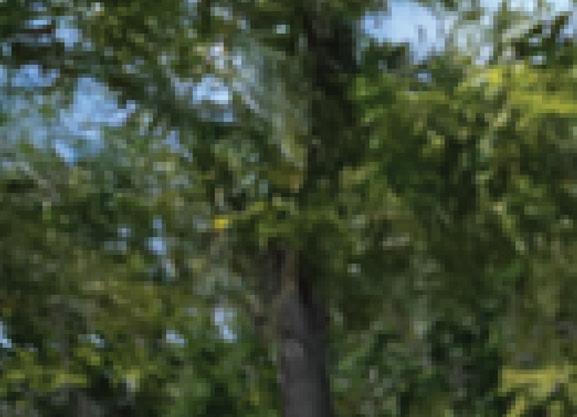


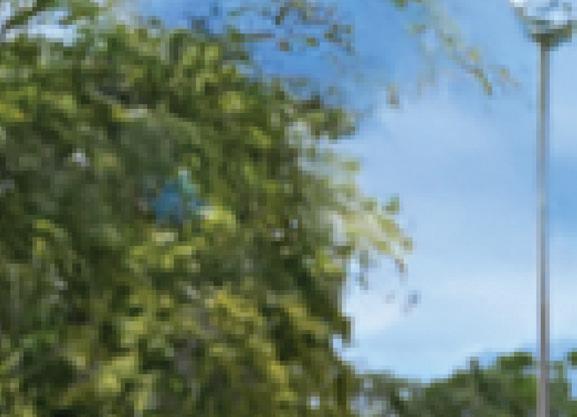

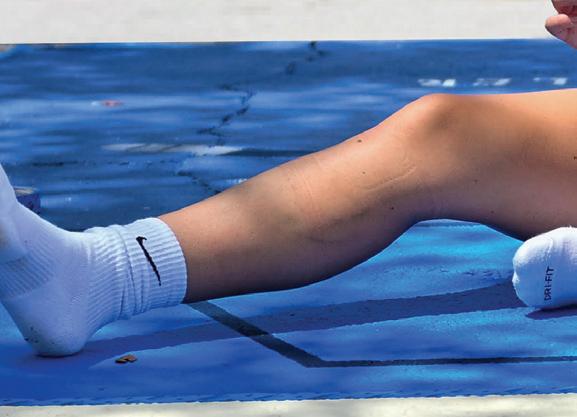
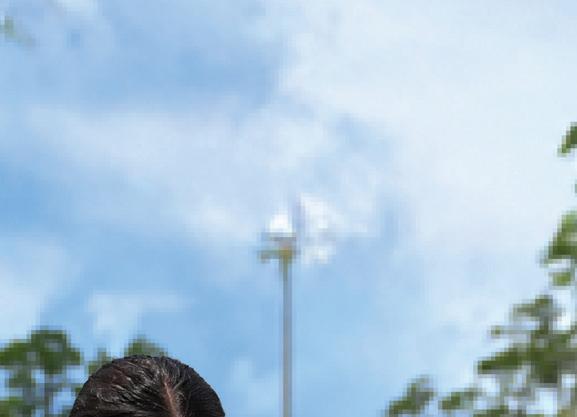
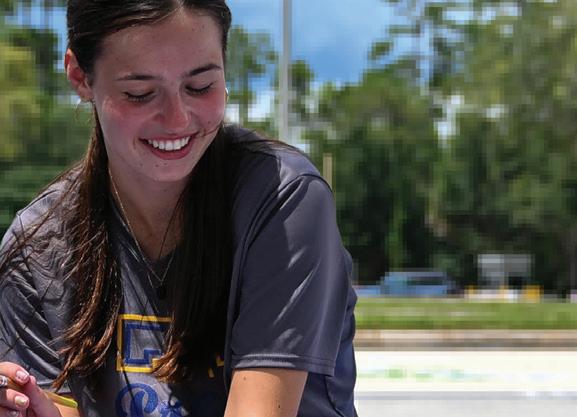

On Sept. 14, the annual college fair occured. Lauren Hayes talked to a representative from Lehigh University. Students went to talk to admissions o cers from 80 di erent colleges to get more information about them.


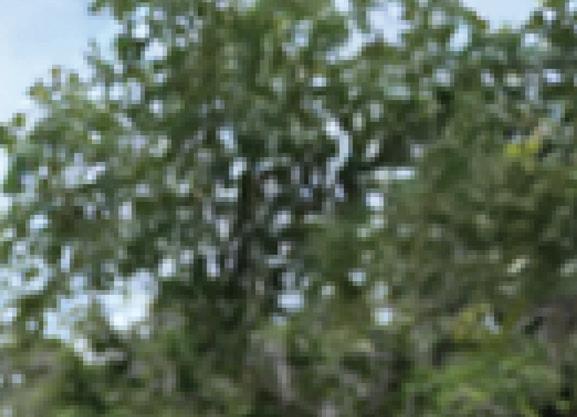

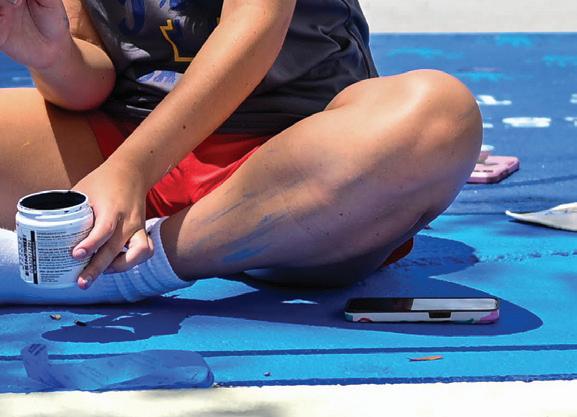




Hoskins

On Aug. 28, the annual club fair featured more than 60 groups. Juniors Alexander Greenwald, Samantha Nappi, Kelly Wentz, and Alex Sagotsky showed o their Wellness4Kids club, while students explored the other extracurricular opportunities from other clubs.




Ally Williams
Julia
Senior Sarah Cantwell paints her parking spot inspired by the late singer Mac Miller.
